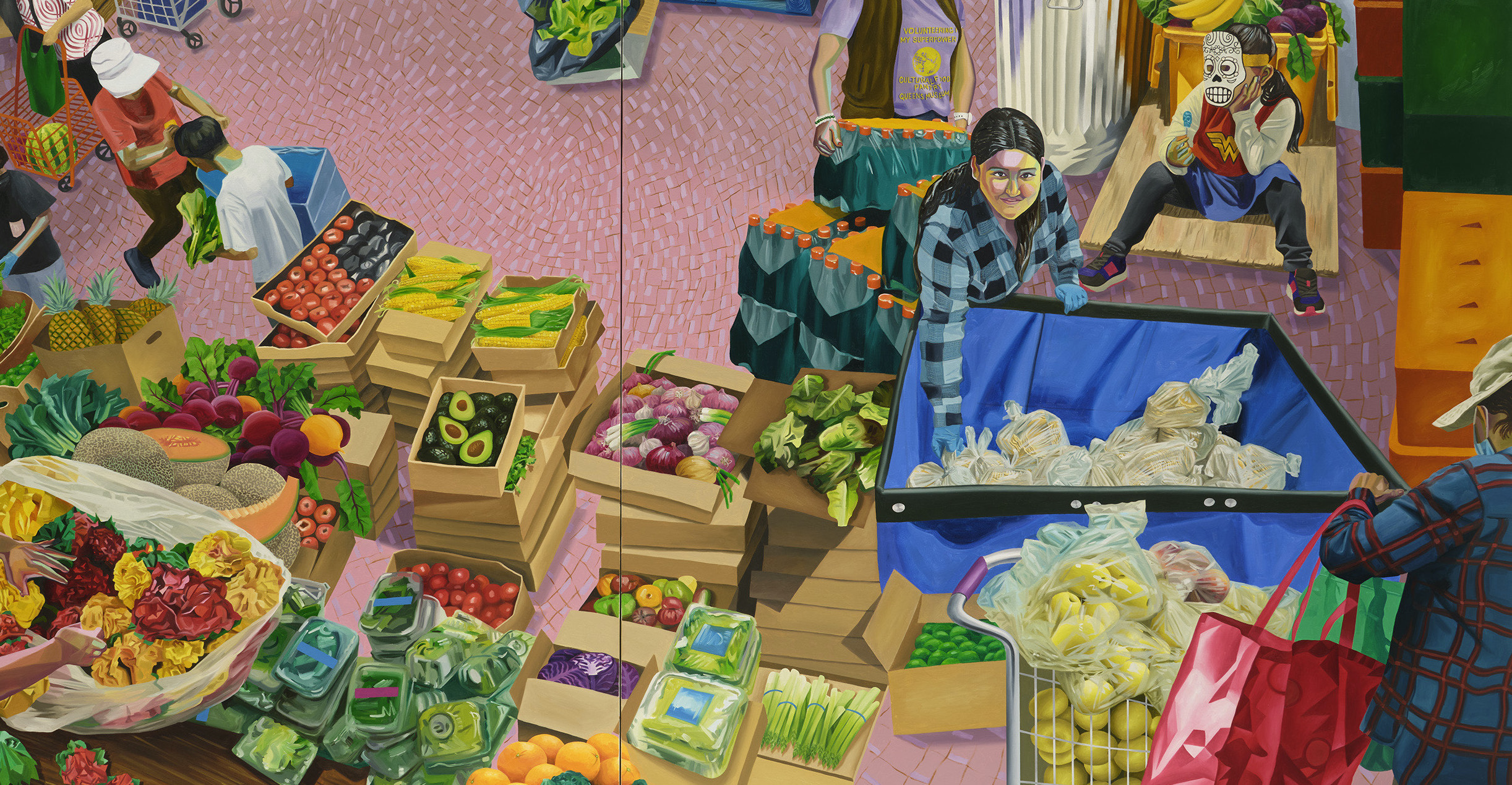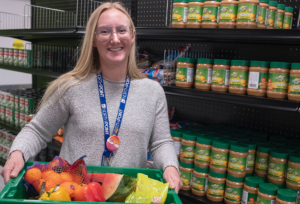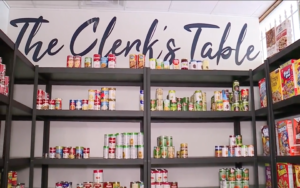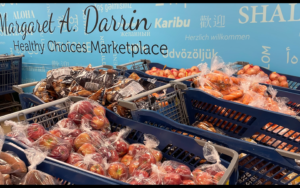The site of the Queens Museum in New York City has been many things over the years. It hosted the New York World’s Fair in 1939, and again in 1964. From 1946 to 1950, it was the headquarters of the United Nations.
In 1972, the site became home to the Queens Museum. Now, in 2023, the Queens Museum is very much still a museum, but it has also become much more.
Today, families from the local community gather and mingle at the doors well before they open at noon. A big part of the draw is a free-food pantry that has been operating at the museum since the height of the Covid-19 pandemic.
The Queens Museum Cultural Food Pantry opened on June 17, 2020, in partnership with a local Queens-based food pantry, La Jornada. Originally meant to be a temporary collaboration, the museum-based pantry has turned into a years-long program that has served 87,000 families, according to museum representatives.
Housing a food pantry inside a cultural institution is emblematic of how food pantry networks are evolving to better reach communities of need. More than ever, food pantries are popping up in novel places, such as health care clinics, libraries, youth centers and workforce development organizations, stretching the definition of what a typical pantry looks like.
In the case of Queens Museum, what started out as a food pantry three years ago has evolved into something more ambitious than anyone involved expected. “They actually feel the museum is like a second home, like a place where you are safe,” said Gianina Enriquez, Community Organizer of Queens Museum, referring to the visitors of the pantry. “They can come here, they can have lunch, they can have someone who asks you, ‘Hey, how are you? We have this for you.’”
Nonperishable food is stored in the museum’s art studio, with fresh food being delivered to the site by La Jornada every morning. Since the museum does not have a fridge or freezer the way a normal food pantry would, any perishable items that do not end up being distributed by the volunteers are given away.
The pantry has encouraged participation by clients in some of the 300 community programs the museum has run in the past year. And it has also translated to the art that the museum puts on display.
In 2021, the museum partnered with Aliza Nisenbaum, a painter who had worked with it almost a decade prior, teaching a bilingual painting class to volunteers. Now, the work of her students is on display, as well as her own work.
Among them is a painting of Hitomi Iwasaki, the museum’s Head of Exhibitions and Curator, and a painting of the Queens Museum Cultural Food Pantry in action (see above for a partial image of the full painting). The exhibit is called “Queens: Lindo y Querido” and is on display until September.
While the Queens Museum has its place today as a food pantry and as a cornerstone of the community, at its core it is still a museum. Iwasaki hopes that all the outreach the museum has done will normalize the fine art on display, and that food pantry clients and community members alike will come to appreciate the arts in a way they may not have been able to before.
“I know it’s a very ambitious and romantic idea of art being a little bit more of a familiar thing,” Iwasaki said. “I think that we’re doing that, knowing this is a very tough and ambitious goal.” People need not necessarily understand the academic concept of art to enjoy it, she added. “It’s good that we can experience it. We can like it and we can wonder.”
***
In another example of art and hunger relief coming together, Long Island Cares is partnering with the immersive Van Gogh art experience, which features the work of the Dutch artist in a three-dimensional format. Long Islanders who purchase a ticket and donate at least two items of food or school supplies get a free ticket to the show. The drive collected more than 1,000 pounds of food in July and has been extended through August.
– Nicolas Magrino
Nicolas Magrino is a graduate student at the Craig Newmark Graduate School of Journalism at CUNY and a summer intern at Food Bank News.
PHOTO ABOVE: A scene from the Queens Museum Cultural Food Pantry. (This is a partial image of the full painting.) Aliza Nisenbaum, Eloina, Angie, Emma, Abril y Marleny, Despensa de Alimentos, Queens Museum, 2023. Oil on canvas, Two panels: 95 x 75 inches, each. Total: 95 x 150 inches. Courtesy the artist and Anton Kern Gallery.
Like what you’re reading?
Support Food Bank News








